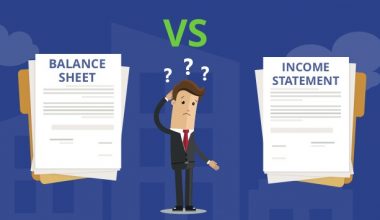Every nonprofit organization needs a mission statement that explains how it will serve a social cause and deliver a public benefit. This mission statement is expanded upon in a nonprofit business plan. Many of the same features as a for-profit business plan are included in these plans, with a focus on fundraising, forming a board of directors, promoting awareness, and remaining in compliance with IRS requirements. A nonprofit business plan can be instrumental in getting your organization off the ground successfully.
What is a Nonprofit Business Plan?
A nonprofit business plan summarizes your organization’s existing state and gives a road map for achieving your goals. It summarizes your company’s strengths, shortcomings, target market, opportunities, and financing plan.
However, your business plan does not need to be original, so keep it as brief as feasible. It may become longer as your organization grows and your needs become more sophisticated, but it should never become so long that it is daunting to open.
Nonprofit business strategies often include the following components:
- Executive summary
- Nonprofit description
- Need analysis
- Products, programs, and services descriptions
- Operational plan
- Marketing Plan
- Impact plan
- Financial plan
However, it is your plan, and you are not required to include all of these sections or adhere to these traditional naming conventions. Sure, you’ll want financial stakeholders and funders to understand it, but you should also make it your own.
Remember that your nonprofit business plan is not a one-and-done document. It’s a living, breathing document that you should refer to and update on a frequent basis. That reference section is crucial since it will direct your actions. So review your plan on a regular basis to verify you’re on the right track.
The Purpose of a Nonprofit Business Plan
A nonprofit business plan is comparable to a for-profit business plan in that it should serve as a clear, comprehensive path for your company. When your plan is finished, questions like “What goals are we trying to achieve?” or “What is the true purpose of our organization?” should be easy to answer.
Your nonprofit business plan should address the following issues:
- In order to achieve the organization’s high-level objectives, what actions do you plan to engage in?
- What are your plans for generating revenue to support these activities?
- What are your operational costs, and how do they divide down?
There is a distinction to be made between a business plan and a strategic plan, however, there may be some overlap. A strategic plan is more conceptual, with several ideas in place to try to accomplish the organization’s larger mission (for example, combating homelessness or boosting climate change awareness). A business plan serves as an action plan since it details how you intend to carry out your strategy in as much detail as feasible.
Steps to Take Before Writing a Nonprofit Business Plan
For a variety of reasons, having a comprehensive plan in a recognizable structure is vital. On the business end, it ensures that as many issues or queries as possible are addressed upfront. It demonstrates to outside entities, such as potential volunteers or funders, that their time and energy will be well managed and put to good use. So, how do you go from concept to reality?
Step #1. Write a mission statement
A mission statement is crucial for any business, but it is especially important for NGOs. Your success indicators include not only the organization’s financial performance but also the impact it has on your cause.
Creating a mission statement is one of the simplest methods to accomplish this. A great mission statement explains why your organization exists and guides the organization’s activities.
A mission statement’s objective is not only to be able to present things outwardly but also to provide your internal team something to realign them if they fall off track.
Step #2. Collect the data
You can’t plan for the future until you have data from the past and present. This can range from financial data if you’re currently in business to secured finance if you’re just getting started.
Operations and financial data (such as revenue, expenses, taxes, and so on) are critical for budgeting and organizational decisions.
You should also gather information on your prospective donor. Who are they in terms of income, demographics, location, and so on, and how can you effectively contact them? Every business must market, and knowing the answers to these demographic questions is critical to targeting the correct audience in a marketing effort.
Step #3. Create an outline
Before you begin drafting your plan, you should create an overview of the sections. Taking inventory of high-level themes first, like in an academic essay, makes it easier to ensure that all points are handled. If you build an outline and discover that you lack all of the materials required to complete it, you may need to return to the data-collecting stage.
Writing an outline provides you with something easy to read that you can readily distribute to your team for feedback. Perhaps some of your colleagues will want to highlight an area that you overlooked or that needs additional substance.
How to Make a Business Plan for Your Nonprofit Organization
The specific material will vary according to the size, purpose, and nature of your nonprofit. However, essential components are required in any business plan in order for investors, donors, and lenders to take you seriously. In general, your outline will be organized around the following major sections:
#1. Executive summary
Even though it comes first in a business plan, many people write it last. This is because the executive summary is intended to be a general description of the entire business plan. Naturally, writing this after the rest of the business plan has been done may be easier.
After reading your executive summary, a reader should have a good notion of what the overall plan entails. Sometimes a person is interested in your non-profit but does not have time to read a 20-page document. In this scenario, the executive summary could mean the difference between landing a significant donor or not.
#2. Products/Services/Programs
This is the section where you can explain in detail what your non-profit performs. Consider it an explanation of how your nonprofit serves the primary need you identified earlier. This varies greatly depending on the type of non-profit you manage. It is critical to clarify not only who benefits from your services, but also the specifics of how those services are delivered.
Readers of your non-profit business plan require as much material as possible in plain and unambiguous language.
#3. Marketing
A non-profit must maintain a consistent flow of both funders and volunteers in order to succeed. Marketing is important in this case, just as it is with any other business. This section should explain who your target audience is and what you’ve done/plan to do to reach them. The way you convey this will differ depending on the stage of your non-profit. This part will be divided to make it more understandable.
Nonprofits not in operation:
Obviously, it is impossible to effectively promote an idea if you are not in business, but you must still have a marketing plan in place. People who want to help your non-profit must understand your marketing plan in order to attract donors. You must profile all of the information you have about your target market and establish your plan for reaching them.
Nonprofits already in operation:
Marketing approaches for established charities vary substantially. If your nonprofit is just getting started, you should include information about your target market, as well as other important characteristics. Describe all of your current marketing initiatives, from events to general outreach to traditional marketing methods like commercials and email plans. Particulars are essential.
#4. Operations
This is intended to be the “how” section of your Products/Services/Programs section.
For example, if your purpose is to deliver school supplies to inner-city schoolchildren, you must describe how you will obtain the items and distribute them to the children in need. Again, attention to detail is critical. A reader should be able to grasp not only how your non-profit runs on a daily basis, but also how any task in the rest of the plan is carried out.
#5. Impact
The elements we’ve been discussing would also be included in a standard for-profit business plan. At this point, we begin to stray a little. The effect section is intended to detail the societal change you plan to bring about with your organization, as well as how your actions will contribute to those goals.
Remember those ideas that went into that mission statement we mentioned earlier? This is your opportunity to demonstrate how you plan to address that mission through your actions, as well as how you plan to monitor your progress.
#6. Finances
In order to operate, every non-profit needs cash and this critical part outlines how you plan to meet these financial requirements. Your business plan can be good in every other area, but if your financial planning is shaky, it will be tough to rally supporters to your cause.
It is critical to present a complete, positive image of your fundraising objectives and goals.
#7. Appendix
In general, this is a place where you can connect any other documents or elements that you think would be relevant to your business plan. This can include more charts or a list of your board of directors.
This is also a good location to include text or technical information that you believe is significant to your business plan but is lengthy or difficult to comprehend. Many of your worries about flow and organization in a plan do not apply to an appendix.
What Should be Included in a Nonprofit Business Plan?
Business plans for charities typically include four components: revenue sources/mix; operations costs; program costs; and capital structure. A business plan details the anticipated sources of income to fund the charitable nonprofit’s activities.
Do You Need a Business Plan for a Nonprofit?
Though every business has a plan, nonprofits may require them the most due to the wide range of audiences they serve. Non-profit business plans must be presented to donors, volunteers, investors, foundations, and beneficiaries, whereas for-profit business plans frequently appeal solely to executives and investors.
How Many Months of Expenses Should a Nonprofit Have?
A common reserve goal is 3-6 months of expenses. At the most, reserves should not exceed the budgeted amount for two years. At the very least, reserves should be sufficient to cover at least one full payroll. Each nonprofit, however, should establish its own reserve goal depending on its financial flow and expenses.
How Many Pages Should a Nonprofit Business Plan Be?
The finest nonprofit business strategies aren’t overly lengthy. They contain as much information as is required. They can be as little as seven pages, one for each of the main components discussed below and shown in our template, or as long as 30 pages if your business grows.
What Happens if You Don’t Have a Business Plan?
Without a plan, you will be so preoccupied with figuring things out as they happen that you will miss out on significant possibilities for progress. You won’t have the resources, time, or attention to figure out how to grow and expand your business.
Conclusion
In conclusion, while a non-profit may have quite different goals than your normal business, the methods by which they achieve those goals share many parallels with for-profit businesses. The greatest method to ensure your success is to have a clear, specific goal and a plan for reaching several milestones along the road. A thorough business plan also provides you with something to refer to when you are suffering and unsure where to turn.
Related Articles
- GIFT LETTER FOR MORTGAGE: How To Write One
- NONPROFIT ACCOUNTING: Best Services and Software
- WHAT IS A NON-PROFIT COMPANY: Everything You Need to Know
- NONPROFIT LOANS: What it is, How it Works, & All You Need
- HOW TO START A NONPROFIT IN 2023: Step-By-Step Guide






